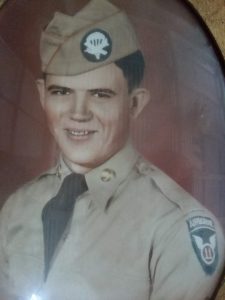
Fred Leon Poppell, age 25, from Florida, Gadsden county.
Parents: Ada M. Poppell
Service era: Korea
Date of death: Thursday, November 2, 1950
Death details: During the last week of October 1950, Republic of Korea (ROK) Army forces under the control of the U.S. Eighth Army were advancing deep in North Korean territory, approaching the Yalu River on the Chinese-Korean border. Chinese Communist Forces (CCF) struck back in a surprise attack, engaging the ROK 1st and 6th Divisions near Unsan, some sixty miles north of Pyongyang. The U.S. 1st Cavalry Division, with the 8th Cavalry Regiment in the lead, was rushed forward to reinforce the ROK units in the Unsan area. On November 1, the regiment’s 1st Battalion took up positions north of Unsan, while the 2nd Battalion moved to guard the Nammyon River valley west of town, and the 3rd Battalion was placed in reserve at the valley’s southern end. Sergeant First Class Fred L. Poppell, who joined the U.S. Army from Florida, was a member of Company B of the 70th Tank Battalion, 1st Cavalry Division, and his platoon was attached to the 3rd Battalion, 8th Cavalry Regiment. On November 1, the CCF engaged in a sneak attack on U.S. forces stationed near Unsan. Despite fierce resistance, the American battalions were forced to withdraw. While the 1st and 2nd Battalion were largely able to retreat to safer positions, strong Chinese presence in the area cut off the 3rd Battalion from its exit routes, forcing its members to form two defensive formations. The men held out against the CCF for two days before being overrun. Most the trapped men were killed, wounded, or captured, with the remainder escaping in small groups. Sergeant First Class Poppell may have been killed on November 2, during the 3rd Battalion’s defensive operations. Survivors of the incident reported he was a crew member of a tank that was destroyed by antitank fire; however, this claim has not been confirmed. Sergeant First Class Poppell was not recovered at the time of his loss, and he could not be associated with any of the remains that North Korean officials returned to U.S. custody following the declaration of the ceasefire. Today, Sergeant First Class Poppell is memorialized on the Courts of the Missing at the National Memorial Cemetery of the Pacific.
Source: National Archives, Defense POW/MIA Accounting Agency, Palm Beach Post (1950)
